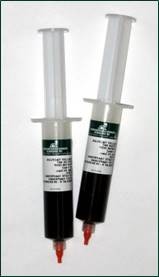This is the second part of my series on semiconductor fluxes. If you haven't seen my first blog post on this topic, you may want to read it now.
So let's start by going a little deeper into flip chip fluxes… A customer approached me about flip-chip fluxes and asked about the optimal dipping depth. After doing some research I found that for standard solder bumps you want to dip it 40 – 50% of the solder height, and for copper pillar micro-bumps you want to dip it to 75-110% of the solder height. You might be thinking, “how can you dip it 110%?” The answer is that the Cu pillar actually has solder just on the tip of the Cu pillar, so you can dip it past the solder to the Cu pillar, hence the 110%.
The rheology of fluxes is very important in dipping applications. If your flux has a high viscosity, you might be unable to remove the die from the dipping tray which could cause bridging between the Cu pillars. If the viscosity is too low, then the flux could wick up the sides of the Cu pillars causing the entire pillar to be coated in flux. Low viscosity also makes the flux less tacky, and thus, the die can move rather than stay in place while reflowing, decreasing the strength of the reflowed joint.
If you find this interesting and helpful, stay tuned for more about semiconductor products - and as always, if you have any questions please reach out to me or anyone on the Indium Corporation Technical Support Engineering team by emailing us at askus@indium.com.


